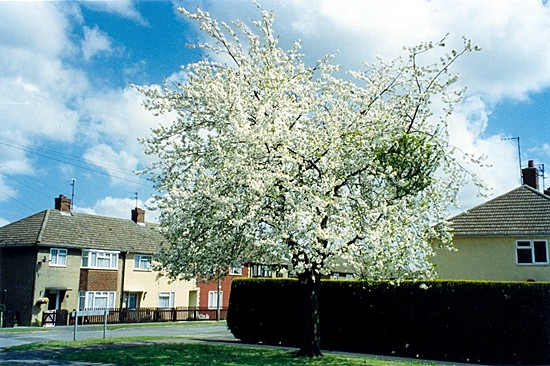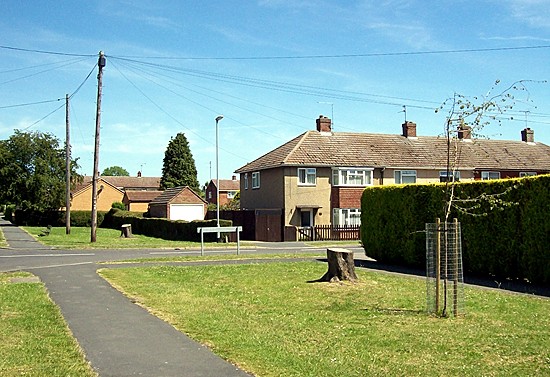|
Queen's Road and Edinburgh Crescent
Bourne is blessed with many trees that line our grass verges and bring colour to the street scene in springtime although not all are surviving. Here in Queen's Road, flowering cherry predominated and there were two particularly fine examples on the corner of Edinburgh Crescent which were cut down in 2008 when it was decided that they had become too dangerous. This residential area was built on farmland to the north east of Bourne as part of the housing boom following the Second World War that brought extra streets and roads to the town. Queen's Road was
under construction with Edinburgh Crescent adjoining in 1953, the year that Queen Elizabeth II was crowned in the company of her consort, the Duke of Edinburgh, and so the two names reflected this national celebration. A variety of colours was used for the woodwork and on Friday 3rd June 1955, under the headline "Living in a rainbow Bourne - boldness in estate colourings" the Stamford Mercury reported: Visitors to Queen's Road and Edinburgh Crescent may be surprised to see the variety of colour which has been used for exterior decoration in these two streets. Combined with the design and layout of the estate, the colours tend to minimise the inevitable "council estate" appearance. To a great extent this use of colour has been at the instigation of Mr C E George, architect to Bourne Urban District Council, who believes in colour variety. On one set of bungalows, the doors are orange, the frames off-white and the windows turquoise green, while another combination has jonquil yellow doors with cream windows and door frames. The magic of the paint box has been let loose with Saxon greens, mercury reds, nursery blues, emerald greens, royal blues, cherry and maroon. All the schemes have been carefully planned on Mr George's drawing board and they are designed to harmonise with the rendering on the walls and the tiles which vary from marigold to dark red. The interest in colour began when Mr George realised it could make "such a difference to the lives of council house residents". The greens, creams and browns of long uninteresting council streets appalled him and he was determined to do something about it. "It does not cost any more and all the residents are quite content", he said. Prior to his work at Bourne, Mr George designed colour schemes for 33 schools at Great Yarmouth in Norfolk where pastel shades replaced the old dark green and brown, removed the "prison" aspect, and provided, in colour, an atmosphere of fresh fields and flowers. The houses were multi-coloured before the tenants went in and we have not yet come across a tenant with a bad word for the scheme.
REVISED JUNE 2009 See also Housing
Go to: Main Index Villages Index |


